Comment now on the Washington State Transportation Plan to tell decision makers that Washington bikes and walks
What are state plans for? Every four years the Washington State Transportation Commission has the job of developing an update to channel the priorities of the legislature and executive branch, in conjunction with applicable state laws to chart a 20-year vision for Washington state’s transportation future.
The Transportation Commission’s latest planning effort, WTP 2035, is now out for public comment. Washington Bikes has been following the planning process for over a year by working with Transportation Commission staff and other partners to provide input that reflects the growing interests from visitors and residents who bicycle.
The Plan is a start, but needs your help and input to ensure the state emphasizes walking and biking safety, mobility, and investments for the future. Now it’s your chance to provide comments to help the plan better reflect your priorities as Washingtonians that support safer transportation options, healthier places and people, great places to travel on your bike (and to support businesses statewide), and more investments that get people where they want to go easily and affordably.
How to Comment
Written comment Let the Commissioners know by emailing them at Transc@wstc.wa.gov, or by commenting online. Comments are due by September 25, 2014.
Meetings There are a few remaining in-person opportunities to comment:
Bellevue Bellevue Regional Library, Room 1 1111 110th Avenue NE, Bellevue, WA 98004 5:00 – 8:00 p.m. Wednesday, September 17, 2014
Richland Ben Franklin Transit Center, Board Room 1000 Columbia Park Trail, Richland, WA 99352 5:00 – 8:00 p.m. Thursday, September 18, 2014
Bremerton Norm Dicks Government Center 345 6th Street, Bremerton, WA 98337 5:00 – 7:00 p.m. Thursday, September 11, 2014
Webinars:
- Wednesday, September 17 | 1pm – 2pm
- Thursday, September 25 | 11 am – noon
For either webinar, RSVP to admin@berkconsulting.com and GoToMeeting login information will be sent out the day before. The format will be a short (20 minute) presentation on WTP 2035 followed by Q&A
Wondering what to say? Washington Bikes has a few high level recommendations included below.
Washington Bikes Recommendations
WTP 2035 should include proposals more robust planning and data collection for non-motorized transportation. Washington Bikes recommends (1) updating the state bike/ped plan; and (2) creating a robust data collection framework for biking and walking to better understand and assess relative safety in Washington’s transportation system.
Background: Washington state agencies focus resources and staffing to calculate vehicle crash rates by exposure (vehicle miles traveled), while injury and fatalities for bicyclists and pedestrians are compared to the population (deaths/injuries per 100,000 population). The lack of comparable denominator data is troubling for public health and safety, as it prevents a valid comparison of the risk of bicycling, walking, and driving. Data suggest a dire need to address this problem: estimates suggest the US has a cyclist injury rate twenty times that of Denmark and The Netherlands and seven times Germany’s. Similarly, WTP uses seven-year-old data from the outdated Washington State Bike/Ped Plan that fails to reflect the huge changes in best practices and increased demand (and cost for system build out) for biking and walking facilities that we now see in 2014.
Washington’s Transportation Plan needs to plan for all trips, not just commute trips. Washington Bike recommends expanding the concept of what trips matter and evaluating the potential to support and plan for non-commute trips in transportation planning.
Background: Researchers have tracked falling Vehicle Miles Traveled (VMT) in recent years. While only 27% of VMT are commute-related, commutes are typically what is addressed in transportation surveys. Without knowing how (and why) people travel, it is difficult to appropriately fund an effective or efficient transportation system. Similarly, small trips of under 3 miles – ones that are ideal for walking and biking – comprise approximately 40% of trips but are often not commute trips.
Student transportation needs recognition in the WTP. Washington Bikes recommends including planning for student transportation and Safe Routes to School in WTP 2035.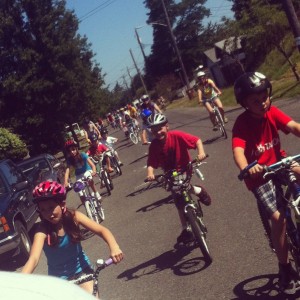
Background: Pupil transportation of our state’s approximately one million children from kindergarten to 12th grade links to several state-level priorities. Student transportation issues factor in around highway safety (on the state highway system, almost 90 percent of all pedestrian and bicycle collisions occur within one mile of a school and 21 percent of those involve children ages 5 to 18), congestion (nationally, 10-14% of peak hour congestion is related to drop-offs and pick-ups of children), and the state’s general fund obligations for McCleary (annually state and local school districts spend almost $500 million annually on pupil transportation).
Biking and walking occurs statewide. Washington Bikes Recommends ensuring that biking and walking planning and resources are considered viable transportation solutions statewide and not just limited to large urban metropolitan areas.
Background: Think Seattle has the highest share of biking commuters in Washington state? Wrong. That designation goes to Ellensburg. Unfortunately, this is a common misconception. Biking and walking occur outside of large urban metropolitan areas, but WTP 2035 implies this is not the case. 3- and 5-year ACS data illustrate this in Ellensburg (22.9% walked and biked), Port Angeles (8.8% walked and biked), Bellingham (11.8% walked and biked), Colville (12% walked and biked), Pullman (24% walked and biked) and Walla Walla (13.1% walked and biked). These numbers often exceed the large metro areas in Washington state. WTP 2035 needs to recognize this fact.
Safety for those that bike and walk needs to be prioritized in Washington state. Washington Bikes Recommends that state transportation planning and the Washington Traffic Safety Commission’s Target Zero plan need to reprioritize bicycle and pedestrian safety to effectively implement Governor Inslee’s Results Washington goal of achieving zero pedestrian and bicycle deaths by 2030.
Background: The emerging issue around safety in Washington state continues to be addressing the shortfalls a transportation system that does not accommodate those that walk and bike, thus creating safety and mobility concerns. Nationally, since 2009, fatalities have been increasing for those that walk and bike. In 2012, over 16% of all traffic-related fatalities were people on bike and foot. More biking and walking can lead to conflicts with other modes, but it also creates “safety in numbers”, which leads to more awareness of those that bike and walk and, ultimately, increased safety.
Remember, let the Commissioners know via email, meeting, or webinar by September 25, 2014.
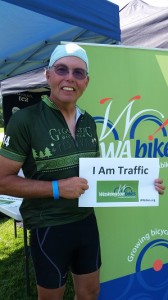
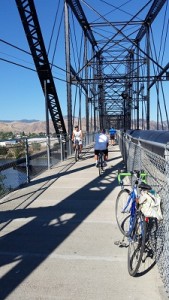
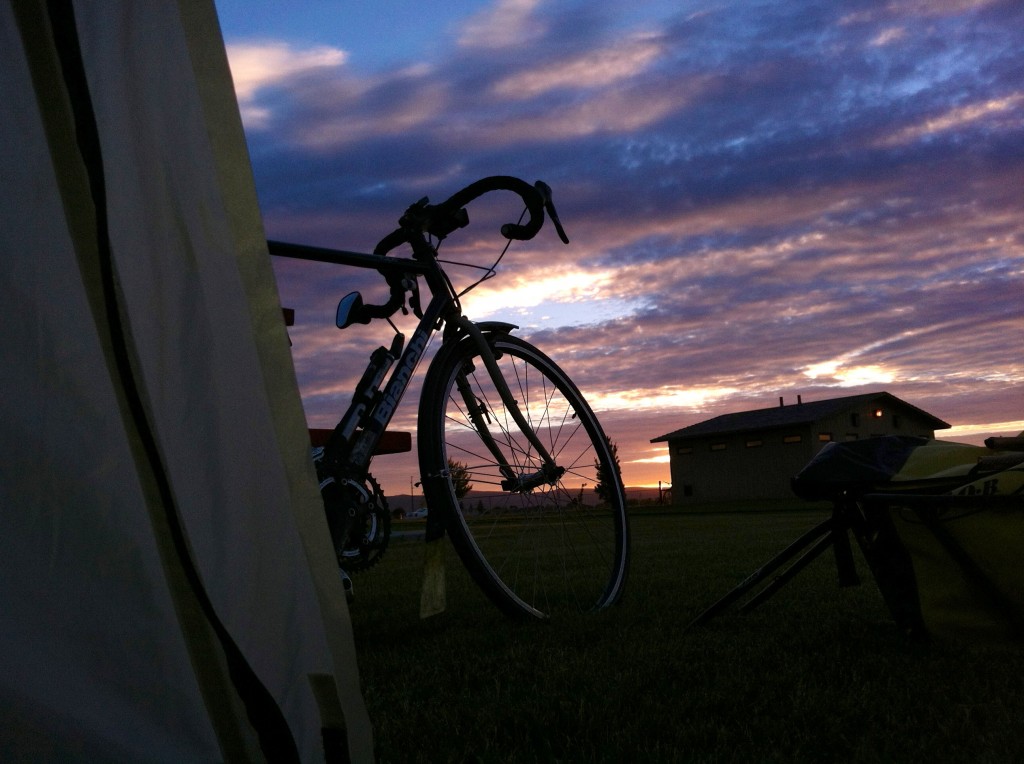
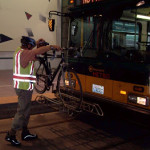
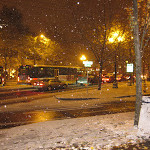


4 Comments
this morning a man on a bike wouldn’t yield the sidewalk to my wife and I as we were on our morning walk, who has the right of way? And is there an rcw that I can bring to this mans attn? This is the second time we’ve ran unto him. There were words exchanged this time, my fear next time will worst.
State law: “The rider of a bicycle shall yield the right-of-way to a pedestrian on a sidewalk or crosswalk.” Here’s the RCW to cite: http://app.leg.wa.gov/RCW/default.aspx?cite=46.61.261
We include this in our pocket guide to state bike laws. If you’d like to receive a few to hand out that could be a great way of handling a similar situation in future. Email info@wabikes.org to request.
I ride everywhere I go “year ’round” with very few exceptions.!!!!
Wrath, greed, sloth, pride, lust, envy, and gluttony. Our current transportation system and trend supports almost all of the 7 deadly sins. We have wrath/anger due to congested streets and our greed to travel in our moving homes for 3mi trips to the convenience store for refined sugar, fat, alcohol, and tobacco. We’re too proud to take the bus or walk to work or the grocery store. We lust for a new car as soon as we rid ourselves of the payments on the last one and yet we still envy people with newer, more expensive, more wasteful cars. Worst, we’re gluttons. We in the US comprise 4.5% of the world’s population, but produce 25% of its CO2. The US has almost singlehandedly created climate change and we won’t do anything about it. The answers are right in front of our noses, the only thing most of us can see when we look down besides our bellies because we’re so fat. This generation is the first that is less healthy than prior generations because we would drive our cars to the bathroom if we could. We are such sloths! Enable us to walk and ride our bikes for pollution, congestion, and cellulite mitigation. Put together a transportation plan that models Dutch, German, and other programs that take back our infrastructure for PEOPLE from CARS. That plan will not make PEOPLE walking and cycling fear CARS. It will give right of way to PEOPLE, not cars, and it will be designed such that PEOPLE move in the most expeditious manner, not cars, and PEOPLE will not fear for their lives or those of their loved ones who are walking or cycling. The only fear PEOPLE should feel is losing their right to drive a car because they did not give right of way while behind the wheel of a lethal weapon. Let’s get better plans to move PEOPLE expeditiously and the economics will follow.